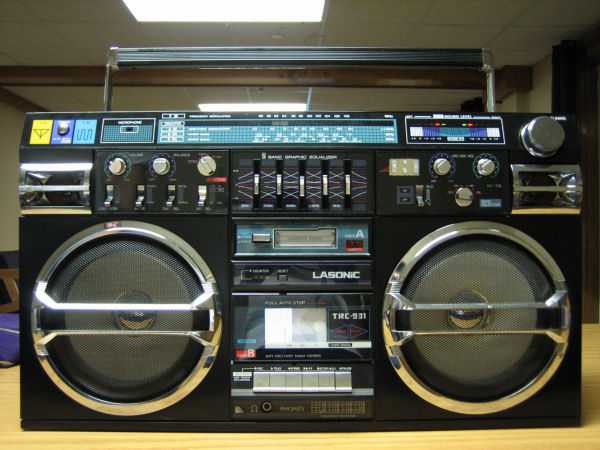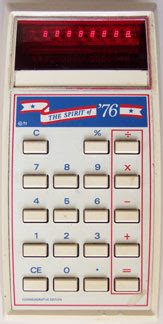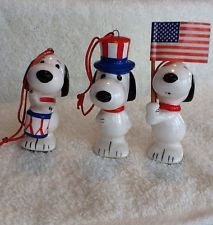No American teenager actively listened to shortwave radio back then - in spite of stations like the English transmissions of Radio Moscow (which broadcasted Western rock music that would get any Soviet teenager sent straight to the gulags if they were ever caught listening to it. With a healthy dose of anti-American propaganda in spite of the fact many of the Western rock acts they did play were AMERICAN.)
Secondly, the low-fi, wildly fluctuating unevenness and irregularity of the shortwave radio signal made music listening on it an endurance test. My guess was the manufacturers were thinking of some phantom jet-set people who wanted to take a radio with them that could allow them to pick up The Voice Of America or the BBC World Service should they wind up in say, Nairobi. But the size of this ghetto blaster (the actual size of a suitcase), to say nothing of the weight (30 lbs. - with the 10 - yes, I said 10 - "D" cell batteries required to feed this thing off of the AC power grid) and weight (did I mention the $200 - about $400 in 2012 dollars) price tag?) guaranteed this radio was STAYING in America.
It had a dual cassette (one deck was a player that you inserted a cassette into it like a car stereo) while the other was a typical ghetto blaster player/recorder for dubbing your Iron Maiden tapes (for your friends in Nairobi) both with auto-reverse, a 5 band graphic equalizer, a Loudness button (for extra punchy bass) through the 12" speakers and countless other buttons as well as a light show in itself just to make this work.
Lasonic went ass over tea kettle (whatever that means) on this product. But even though Lasonic (who?) weren't a very well known electronics name like Sony, Panasonic or Aiwa, this radio became so influential on the TRUE ghetto blaster folks (early rap stars), that Lasonic reissued the TRC-931 in 2007, with iPod connections replacing the often faulty dual cassette system. I really think, why not just BUILD an MP3 player/recorder into it, using thumb/flash drives (the cassettes of today?)
Portable stereos in the early '80s were HUGE things only for the most headstrong music fan when a simple Walkman won't do.
I'm not sure if it was the lawyers were getting on them for the hernia problems these huge radio/tape decks were potentially causing for kids at school (I mean with 30 lbs. of boombox and cassette tapes on one arm and another 30 lbs. of Trapper Keeper and books on the other.). But the rockin' out sure took a hit.
Then it really got colourful:
 |
| The Sharp QT-50 |
There were 8-track capable sets
This was Montgomery Ward's 1983 offering. Montgomery Ward, Radio Shack and the RCA Music Service were the final outposts for the hardened 8-track tape lover in the '80s as Montgomery Ward still made players by the end of 1984, Radio Shack still sold blank 8-tracks, tape head cleaners and cases and the RCA Music Service still made and offered a slowly decreasing, selection of new 8-track tapes well into 1988.
...and those with TVs
Some even had turntables (for warping and scratching your records while playing volleyball on the beach.)
Sadly...by 1990, the portable stereo had become, seen-one, you seen 'em, all black things in weird shapes with CD players. They brought the colours back too more recently, but I still wish they made them like those BIG powerhouses from back in the day....


















































